Maresin 1 induces a novel pro-resolving phenotype in human platelets
- PMID: 28079976
- PMCID: PMC5378657
- DOI: 10.1111/jth.13620
Maresin 1 induces a novel pro-resolving phenotype in human platelets
Abstract
Essentials Specialized proresolving mediators (SPMs) promote the resolution of inflammation. This study sought to investigate the effects of SPMs on human platelet function. The SPM, Maresin 1, enhanced hemostatic, but suppressed inflammatory functions of platelets. SPMs uniquely regulate platelet function and may represent a new class of antiplatelet agents.
Summary: Background Antiplatelet therapy is a cornerstone of modern medical practice and is routinely employed to reduce the likelihood of myocardial infarction, thrombosis and stroke. However, current antiplatelet therapies, such as aspirin, often have adverse side-effects, including increased risk of bleeding, and some patients are relatively 'aspirin-resistant'. Platelets are intimately involved in hemostasis and inflammation, and clinical consequences are associated with excessive or insufficient platelet activation. Objectives A major unmet need in the field of hematology is the development of new agents that safely prevent unwanted platelet activation in patients with underlying cardiovascular disease, while minimizing the risk of bleeding. Here, we investigate the potential of endogenously produced, specialized pro-resolving mediators (SPMs) as novel antiplatelet agents. SPMs are a recently discovered class of lipid-derived molecules that drive the resolution of inflammation without being overtly immunosuppressive. Methods Human platelets were treated with lipoxin A4, resolvin D1, resolvin D2, 17-HDHA or maresin 1 for 15 min, then were subjected to platelet function tests, including spreading, aggregation and inflammatory mediator release. Results We show for the first time that human platelets express the SPM receptors, GPR32 and ALX. Furthermore, our data demonstrate that maresin 1 differentially regulates platelet hemostatic function by enhancing platelet aggregation and spreading, while suppressing release of proinflammatory and prothrombotic mediators. Conclusions These data support the concept that SPMs differentially regulate platelet function and may represent a novel class of antiplatelet agents. SPMs also may play an important role in the resolution of inflammation in cardiovascular diseases.
Keywords: antiplatelet agents; hemostasis; inflammation; platelet activation; platelets.
© 2017 International Society on Thrombosis and Haemostasis.
Conflict of interest statement
N. Blumberg has received lecture honoraria and consulting fees from Antek, Inc., Fenwal, Pall BioMedical, and Caridian (Terumo), manufacturers of leukoreduction filters, blood component equipment, and cell washing devices. The other authors have nothing to disclose.
Figures

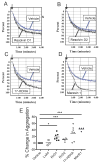
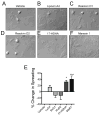
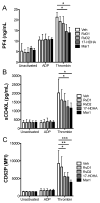
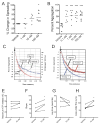
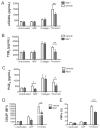
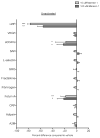


Similar articles
-
Use of Specialized Pro-Resolving Mediators to Alleviate Cold Platelet Storage Lesion.Transfusion. 2020 Jun;60 Suppl 3:S112-S118. doi: 10.1111/trf.15750. Epub 2020 Jun 1. Transfusion. 2020. PMID: 32478925
-
Proresolving lipid mediators resolvin D1, resolvin D2, and maresin 1 are critical in modulating T cell responses.Sci Transl Med. 2016 Aug 24;8(353):353ra111. doi: 10.1126/scitranslmed.aaf7483. Sci Transl Med. 2016. PMID: 27559094 Free PMC article.
-
Pro-resolving mediators promote resolution in a human skin model of UV-killed Escherichia coli-driven acute inflammation.JCI Insight. 2018 Mar 22;3(6):e94463. doi: 10.1172/jci.insight.94463. JCI Insight. 2018. PMID: 29563331 Free PMC article.
-
Functional Foods in Preventing Human Blood Platelet Hyperactivity-Mediated Diseases-An Updated Review.Nutrients. 2024 Oct 30;16(21):3717. doi: 10.3390/nu16213717. Nutrients. 2024. PMID: 39519549 Free PMC article. Review.
-
Antiplatelet effect of aspirin in patients with coronary artery disease.Dan Med J. 2012 Sep;59(9):B4506. Dan Med J. 2012. PMID: 22951204 Review.
Cited by
-
Can Inflammation-Resolution Provide Clues to Treat Patients According to Their Plaque Phenotype?Front Pharmacol. 2019 Mar 7;10:205. doi: 10.3389/fphar.2019.00205. eCollection 2019. Front Pharmacol. 2019. PMID: 30899222 Free PMC article. Review.
-
The expansive role of oxylipins on platelet biology.J Mol Med (Berl). 2017 Jun;95(6):575-588. doi: 10.1007/s00109-017-1542-4. Epub 2017 May 20. J Mol Med (Berl). 2017. PMID: 28528513 Free PMC article. Review.
-
Resolution of vascular injury: Specialized lipid mediators and their evolving therapeutic implications.Mol Aspects Med. 2017 Dec;58:72-82. doi: 10.1016/j.mam.2017.07.005. Epub 2017 Aug 4. Mol Aspects Med. 2017. PMID: 28765077 Free PMC article. Review.
-
Treatment With a Marine Oil Supplement Alters Lipid Mediators and Leukocyte Phenotype in Healthy Patients and Those With Peripheral Artery Disease.J Am Heart Assoc. 2020 Aug 4;9(15):e016113. doi: 10.1161/JAHA.120.016113. Epub 2020 Jul 22. J Am Heart Assoc. 2020. PMID: 32696697 Free PMC article. Clinical Trial.
-
From blood coagulation to innate and adaptive immunity: the role of platelets in the physiology and pathology of autoimmune disorders.Rheumatol Int. 2018 Jun;38(6):959-974. doi: 10.1007/s00296-018-4001-9. Epub 2018 Feb 28. Rheumatol Int. 2018. PMID: 29492586 Free PMC article. Review.
References
Publication types
MeSH terms
Substances
Grants and funding
LinkOut - more resources
Full Text Sources
Other Literature Sources
Medical

